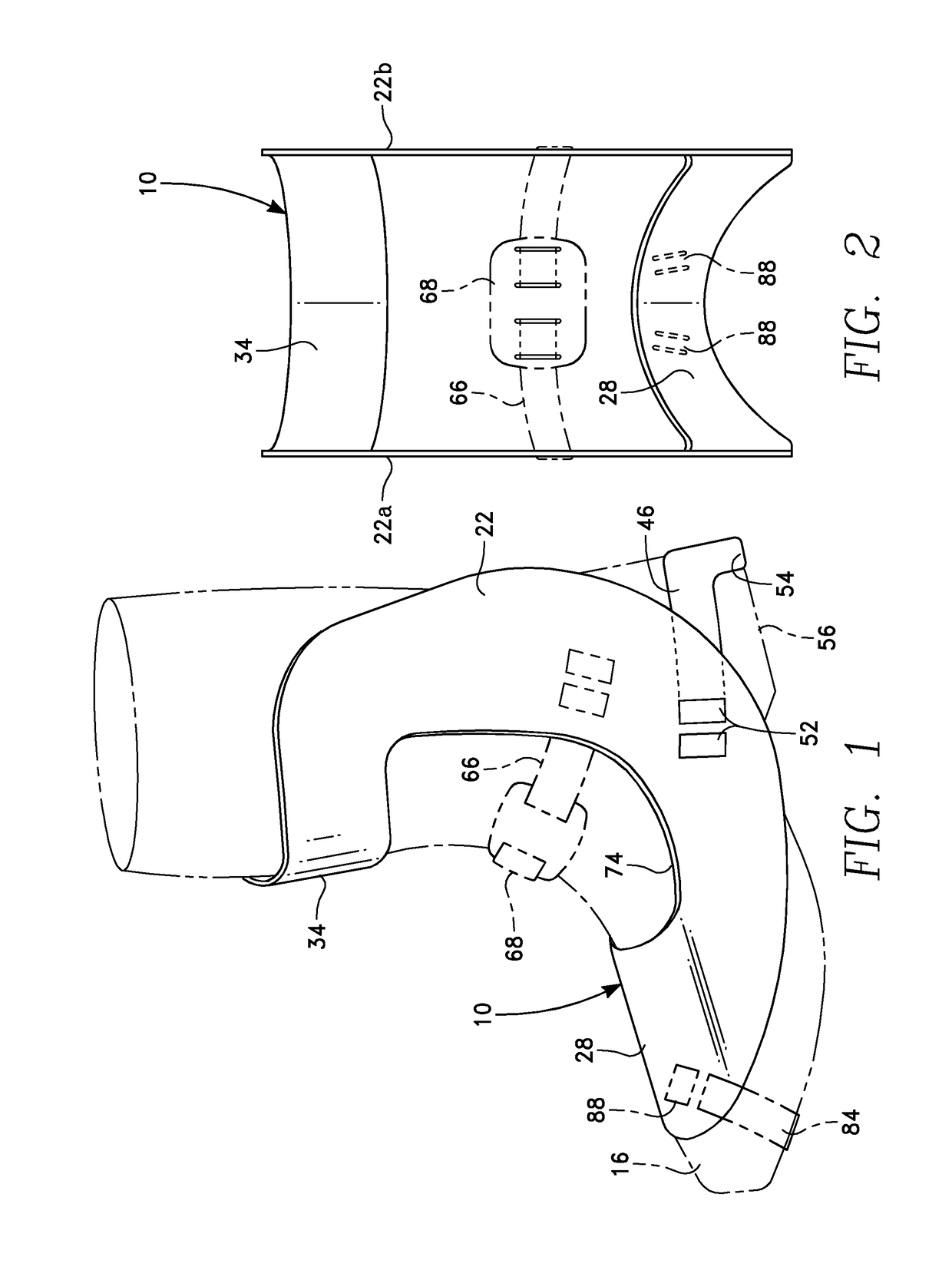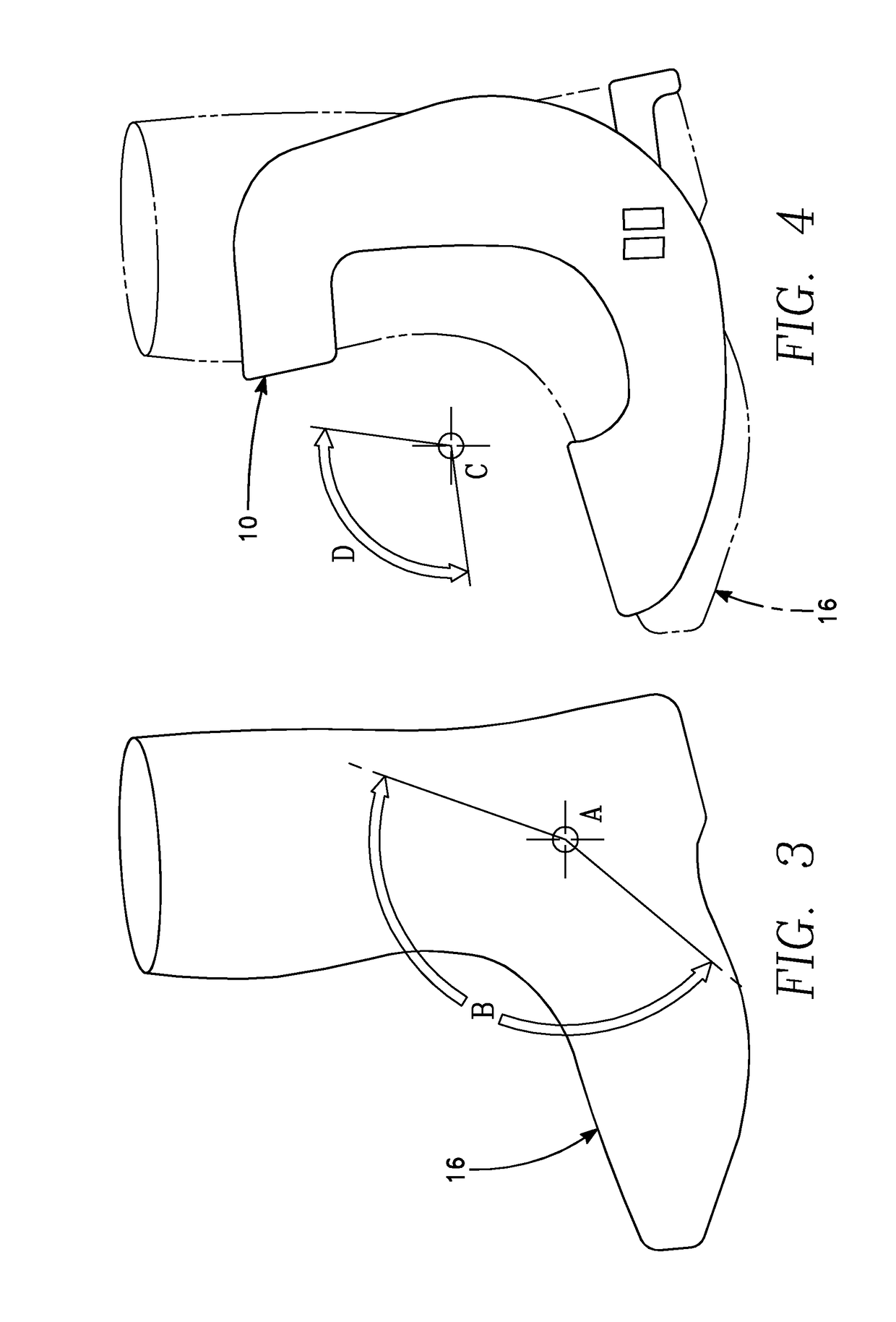Ankle brace
a technology for ankles and heels, applied in the field of orthotics, can solve the problems of affecting the healing time of ankles and heels, affecting the patient's comfort, and requiring months of healing time before recovery, and achieve the effect of preventing extension or flexion of the foo
- Summary
- Abstract
- Description
- Claims
- Application Information
AI Technical Summary
Benefits of technology
Problems solved by technology
Method used
Image
Examples
Embodiment Construction
[0021]The ankle brace is disclosed herein with respect to exemplary embodiments. The embodiments are disclosed for illustration of the ankle brace and a manner of operation, and are not limiting except as defined in the appended claims.
[0022]Reference is now made to the drawings wherein like structures refer to like parts throughout. In FIG. 1 an ankle brace 10 is placed over and secured to a boot 16 placed on the foot of a patient (not shown in the Figures), providing support for many of the ankle weight-bearing bones, ligaments, and tendons. The ankle brace 10 includes a pair of lateral trusses 22 (the ankle brace 10 is substantially symmetric and only one of the pair of trusses is shown in FIG. 1—while the pair of trusses 22a, 22b are shown in FIG. 2). Each of the trusses 22a, 22b extend on a separate side of the foot and leg, along both the medial border and the lateral border (see FIG. 2), from a location adjacent the toes, curving upwardly to a location on the lower leg that i...
PUM
 Login to View More
Login to View More Abstract
Description
Claims
Application Information
 Login to View More
Login to View More - R&D
- Intellectual Property
- Life Sciences
- Materials
- Tech Scout
- Unparalleled Data Quality
- Higher Quality Content
- 60% Fewer Hallucinations
Browse by: Latest US Patents, China's latest patents, Technical Efficacy Thesaurus, Application Domain, Technology Topic, Popular Technical Reports.
© 2025 PatSnap. All rights reserved.Legal|Privacy policy|Modern Slavery Act Transparency Statement|Sitemap|About US| Contact US: help@patsnap.com



